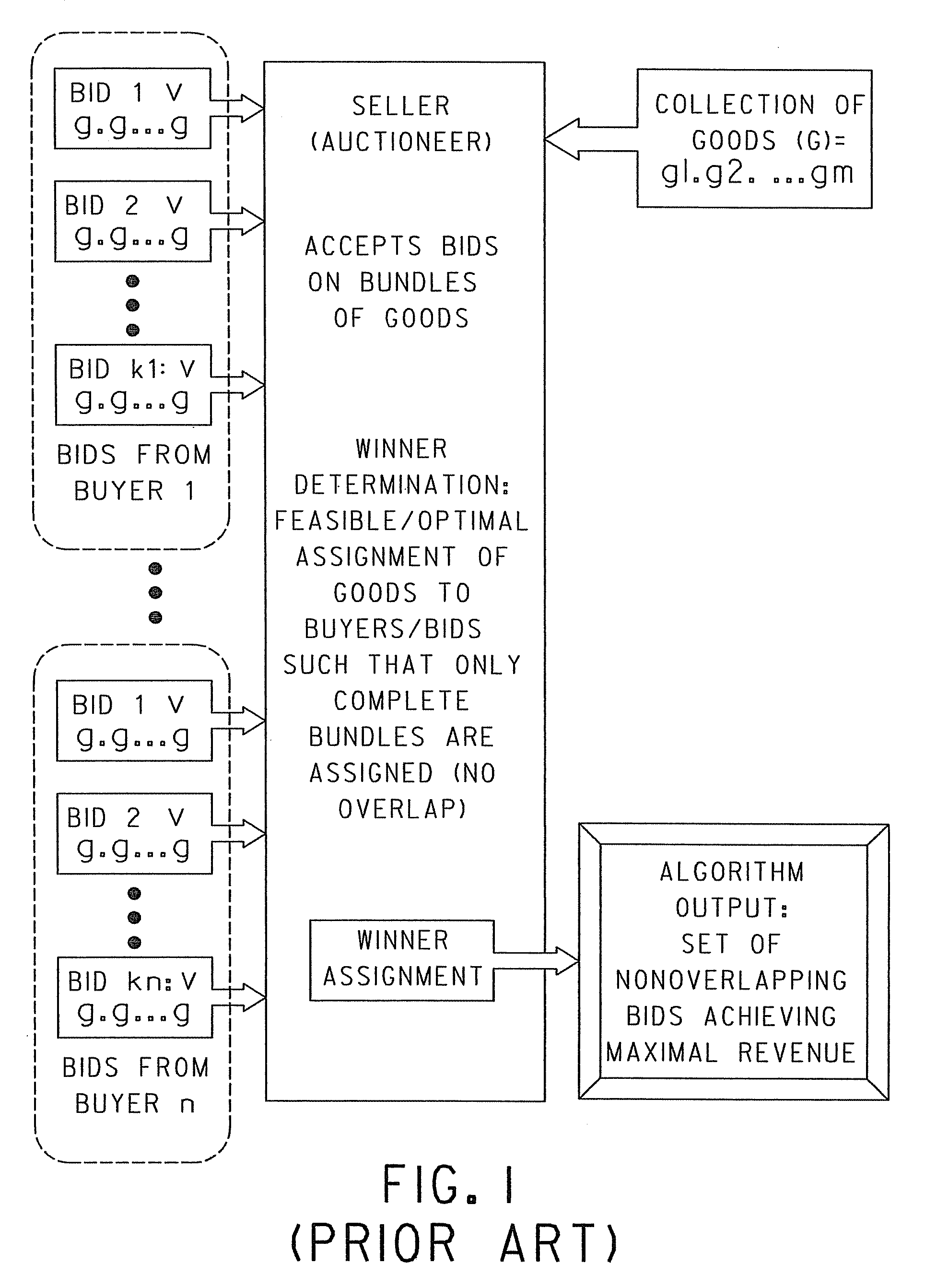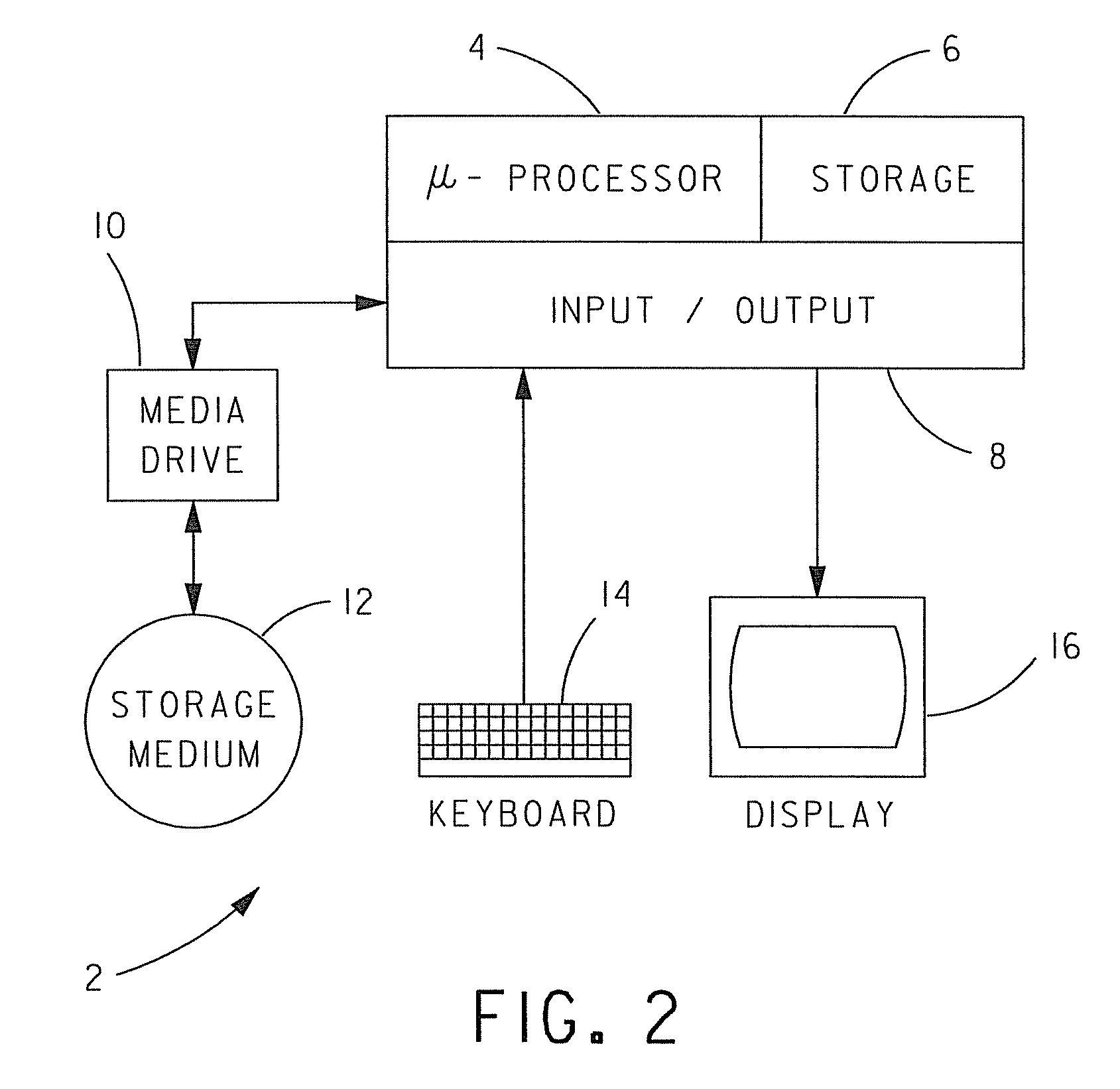Concisely expressed combinatorial auction problem solving method
a problem solving and combinatorial auction technology, applied in the field of combinatorial auction winner determination, can solve the problems of maximizing the seller's revenue, current methods have difficulty in combinatorial auctions involving goods and bids beyond, and achieve the effect of maximizing or minimizing the value of the plurality of bids
- Summary
- Abstract
- Description
- Claims
- Application Information
AI Technical Summary
Benefits of technology
Problems solved by technology
Method used
Image
Examples
Embodiment Construction
[0083]The winner determination problem for a combinatorial auction is a difficult computational problem whose solution time grows exponentially with problem size. To solve this problem, an approximate solution algorithm for winner determination based on the use of a stochastic local search technique can be utilized. This algorithm does not systematically search through the space of possible solutions, but instead utilizes a random component to guide the search. While this algorithm can be useful, it does not guarantee that an optimal, revenue-maximizing allocation will be found. Despite the lack of guarantees, however, this algorithm typically finds high quality solutions much faster than existing algorithms.
[0084]Notwithstanding the usefulness of this algorithm, it would be desirable to utilize conventional optimizing software for winner determination. However, heretofore, no method has been disclosed for converting bids that utilize highly expressive logical operators to express t...
PUM
 Login to View More
Login to View More Abstract
Description
Claims
Application Information
 Login to View More
Login to View More - R&D
- Intellectual Property
- Life Sciences
- Materials
- Tech Scout
- Unparalleled Data Quality
- Higher Quality Content
- 60% Fewer Hallucinations
Browse by: Latest US Patents, China's latest patents, Technical Efficacy Thesaurus, Application Domain, Technology Topic, Popular Technical Reports.
© 2025 PatSnap. All rights reserved.Legal|Privacy policy|Modern Slavery Act Transparency Statement|Sitemap|About US| Contact US: help@patsnap.com



